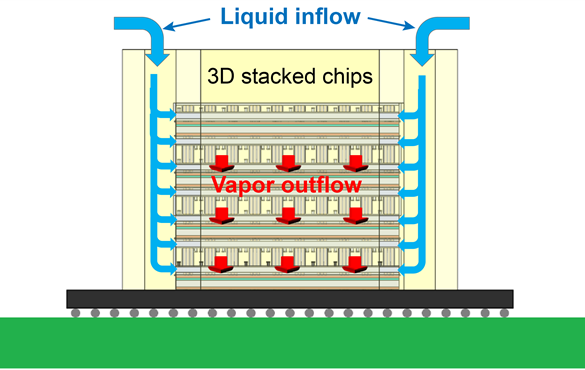Agonafer receives $86,419 grant from Google
With funding from Google Inc., Damena Agonafer will develop a prototype micropillar array in combination with a porous copper liquid delivery layer to promote evaporative cooling in chips

Research aims to create better cooling strategy for data center infrastructure
Developing an effective cooling strategy is one of the major concerns in designing data center infrastructure for high-performance computing or big data analysis. To maintain optimal processing speed, the electronics must be kept at a reasonable temperature, generally less than 85 degrees Celsius depending on the application, and be prevented from overheating.
In particular, heat dissipation at the chip level, due to the limited volume and high local heat flux, is the most critical and challenging component in designing an effective thermal management system. With the continuous advancement in microprocessor technology, traditional cooling methods are becoming unable to remove the ever-increasing heat flux generated from the chip.
To tackle this issue, Damena Agonafer, assistant professor of mechanical engineering & materials science, seeks to develop a direct two-phase cooling solution by designing a bioinspired evaporative microheat exchanger. This heat exchanger features an array of porous micropillar structures which can promote an ultra-fast evaporation rate by allowing stable microdroplets to form.
With a one-year, $86,419 grant from Google Inc., Agonafer will develop a prototype micropillar array in combination with a porous copper liquid delivery layer to promote evaporative cooling. Ultimately, the micropillar will measure 1 to 5 microns in diameter. As a comparison, a human hair is 75 microns wide.
The design of the micropillar array is based on a 400-million-year-old arthropod called a springtail, which lives in damp soil and has textured skin that repels liquids. Agonafer will further design different geometries of the micropillar structure to tune the liquid droplets from the usual round, hemispheric shape to an oblong, triangular, rectangular, or even a star shape and determine which is most effective in promoting cooling.
"No one has ever studied the heat transfer mechanism of an asymmetrical droplet systematically," Agonafer said.
Agonafer will be exploring the heat transfer mechanism at the micro- and nanoscale by both experimental and numerical investigation to determine the optimal droplet shape for a more efficient evaporative cooling solution.



